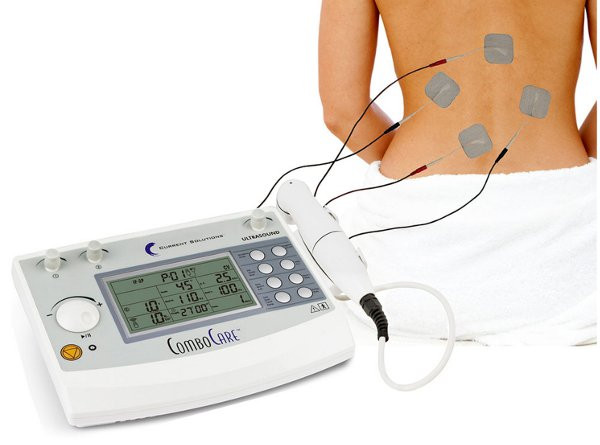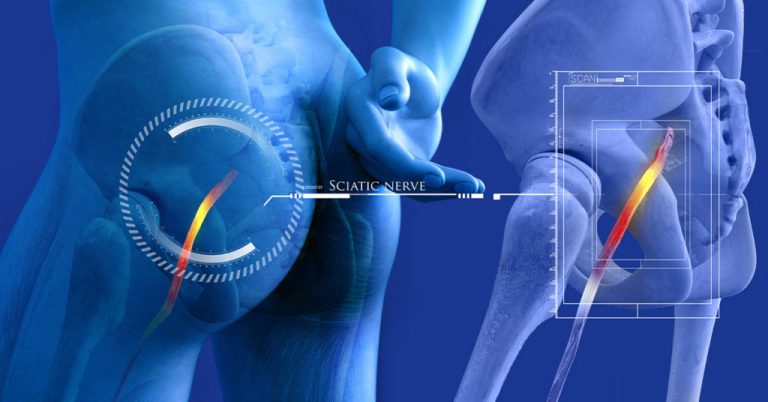Do TENS Units Work for Sciatica?
Introduction
If you’re suffering from sciatica, you’ve likely explored various treatment options in search of relief. Among these options, one that often comes up is the use of Transcutaneous Electrical Nerve Stimulation (TENS) units. But do TENS units really work for sciatica?
The Science Behind TENS for Sciatica
According to recent studies, TENS for sciatica has shown promising results for many patients. A meta-analysis published in the Journal of Pain Research revealed that TENS therapy significantly reduced pain intensity in patients with sciatica when compared to a control group (p < 0.001) (Source: sciencedirect.com). This finding underscores the potential of TENS units as a non-invasive and drug-free approach to managing sciatic nerve pain.
How TENS Units Work
TENS units operate by delivering low-voltage electrical currents to targeted areas of the body, effectively disrupting pain signals and promoting the release of endorphins, the body’s natural painkillers. As a result, patients often experience relief from sciatic nerve pain, allowing them to resume daily activities with greater ease.
Evidence of Effectiveness
Furthermore, a study published in the Journal of Back and Musculoskeletal Rehabilitation found that TENS therapy not only reduced pain but also improved functional outcomes in patients with chronic sciatica (Source: ncbi.nlm.nih.gov). This dual benefit makes TENS an attractive option for individuals looking to alleviate both the physical discomfort and functional limitations associated with sciatica.
Convenience and Accessibility
Because TENS units are portable and easy to use, they offer convenience and flexibility for sciatica patients. Whether you’re at home, work, or on the go, you can incorporate TENS therapy into your daily routine as needed. This accessibility contributes to the overall effectiveness of TENS units in managing sciatic nerve pain.
Using a TENS Machine for Sciatica: Guidelines for Effective Treatment
When using a Transcutaneous Electrical Nerve Stimulation (TENS) machine for sciatica, it’s essential to follow proper guidelines to maximize its effectiveness and safety. Here are the key aspects of using a TENS machine for sciatic nerve pain relief:
Modes of Operation:
Most TENS machines offer different modes of operation, such as continuous mode and burst mode.
Continuous mode delivers a steady stream of electrical pulses, providing continuous stimulation to the nerves.
Burst mode, on the other hand, delivers clusters of rapid pulses followed by periods of no stimulation, mimicking the body’s natural pain-relieving mechanisms.
Frequency Settings:
The frequency setting on a TENS machine refers to the number of electrical pulses delivered per second, measured in Hertz (Hz).
For sciatica relief, frequencies typically range from 80 Hz to 120 Hz, although individual preferences may vary.
Higher frequencies (e.g., 100-120 Hz) are often used for acute pain relief, while lower frequencies (e.g., 80-100 Hz) may be more suitable for chronic pain management.
Pulse Width Adjustment:
Pulse width, also known as pulse duration, refers to the length of time each electrical pulse is delivered, measured in microseconds (μs).
Sciatica patients often find relief with pulse widths ranging from 50 μs to 200 μs.
Shorter pulse widths (e.g., 50-100 μs) are effective for targeting superficial nerves and providing quick pain relief, while longer pulse widths (e.g., 150-200 μs) can penetrate deeper tissues for more sustained pain management.
Usage Instructions
- Start by placing the TENS electrodes on or near the area where you experience sciatic nerve pain. Common electrode placements include along the lower back, buttocks, and down the leg following the path of the sciatic nerve.
- Turn on the TENS machine and select the desired mode (continuous or burst) based on your preference and pain relief needs.
- Adjust the frequency and pulse width settings according to your healthcare provider’s recommendations or personal comfort levels.
- Gradually increase the intensity of the electrical stimulation until you feel a tingling or tapping sensation without causing discomfort or pain.
- Use the TENS machine for sessions typically ranging from 15 to 60 minutes, depending on your tolerance and the severity of your sciatica symptoms.
- Follow a regular schedule for TENS therapy sessions, such as daily or several times per week, to maintain consistent pain management benefits.
Safety Precautions:
- Always read the user manual provided with your TENS machine and follow manufacturer instructions for safe usage.
- Avoid placing electrodes over broken or irritated skin, areas with reduced sensation, or near the eyes, throat, or heart.
- Consult with your healthcare provider before starting TENS therapy, especially if you have a pacemaker, implanted devices, or other medical conditions.
Recommendation and Integration into Treatment Plans
Consequently, healthcare professionals often recommend TENS therapy as part of a comprehensive treatment plan for sciatica. When combined with other modalities such as physical therapy, stretching exercises, and lifestyle modifications, TENS can enhance outcomes and improve the quality of life for individuals dealing with sciatic nerve pain.
Empowering Patients with Information
Hence, at Medcareline.com, we strive to provide valuable resources and information to help sciatica patients make informed decisions about their treatment journey. From understanding the benefits of TENS units to exploring other complementary therapies, our platform aims to empower individuals with knowledge and support as they navigate the challenges of sciatic nerve pain.
Conclusion
In conclusion, TENS units can indeed work for sciatica by reducing pain intensity and improving functional outcomes for patients. Therefore, considering TENS therapy as part of your sciatica management strategy may offer a valuable avenue for relief and enhanced well-being. Since pain management is a highly individualized process, consulting with a healthcare professional is essential to determine the most suitable treatment plan for your specific needs.
Frequently Asked Questions
Q: Can TENS units be used alongside other treatments for sciatica?
A: Yes, TENS units can often be used alongside other treatments such as physical therapy, medications, and lifestyle modifications. However, it’s essential to consult with your healthcare provider to ensure a safe and effective combination of therapies.
Q: Are there any side effects associated with TENS therapy for sciatica?
A: While TENS therapy is generally considered safe, some individuals may experience mild skin irritation at the electrode sites or a tingling sensation during use. These effects are usually temporary and can be managed by adjusting the settings or positioning of the electrodes.
Q: How often should I use a TENS unit for sciatica pain relief?
A: The frequency of TENS therapy sessions can vary depending on your specific condition and response to treatment. Your healthcare provider may recommend using the TENS unit for a certain duration each day or as needed to manage pain flare-ups.
Q: Can TENS units cure sciatica permanently?
A: TENS therapy is primarily aimed at managing and reducing sciatica symptoms such as pain and discomfort. While it can provide significant relief for many patients, it is not a cure for sciatica. Long-term management strategies may include ongoing use of TENS units alongside other therapies.
Q: Are TENS units covered by insurance for sciatica treatment?
A: Coverage for TENS units by insurance providers can vary widely. Some insurance plans may partially or fully cover the cost of TENS units for certain medical conditions, including sciatica. It’s advisable to check with your insurance provider to understand your coverage options.
Q: Can I use a TENS unit if I have a pacemaker or other implanted medical devices?
A: It’s crucial to consult with your healthcare provider before using a TENS unit if you have a pacemaker, defibrillator, or other implanted medical devices. In some cases, TENS therapy may not be recommended due to potential interactions with these devices.
Q: Is TENS therapy suitable for all types of sciatica?
A: TENS therapy can be beneficial for various types of sciatica, including acute and chronic cases. However, individual responses to treatment may vary, and it’s essential to work with your healthcare provider to determine the most appropriate treatment approach for your specific condition.







